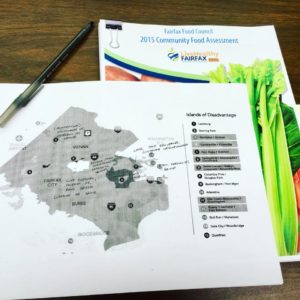
“Student Hunger”

This Week at CHHR
-Ron Lapitan, Former Community Outreach Coordinator
Tuesday 11/28
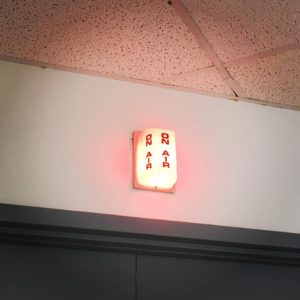 Talk Show Appearance: A representative of CHHR participated in an interview for the Virginia Report, a talk show hosted by delegate to the VA General Assembly Ken Plum, to talk about CHHR’s projects to address local poverty and inequality. The program will air on Reston Comcast Channel 28 (Verizon Channel 1981) on Tuesday, December 26 at 7:30 p.m. and again on Wednesday, December 27 at 10:30 p.m. It is also viewable on the Virginia Report’s Youtube channel.
Talk Show Appearance: A representative of CHHR participated in an interview for the Virginia Report, a talk show hosted by delegate to the VA General Assembly Ken Plum, to talk about CHHR’s projects to address local poverty and inequality. The program will air on Reston Comcast Channel 28 (Verizon Channel 1981) on Tuesday, December 26 at 7:30 p.m. and again on Wednesday, December 27 at 10:30 p.m. It is also viewable on the Virginia Report’s Youtube channel.
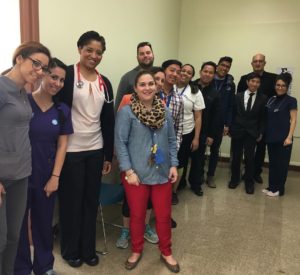 Free Sports Physicals: CHHR doctors and staff travelled to the International High School at Langley Park in MD, a school whose student body is 100% immigrants and refugees, to do free sports physicals for athletes to enroll in sports. Our medical staff also visited our Health as Right team having their meeting across the hall at the same time and answered questions for the students, who all aspire to go into medicine. (Image: CHHR staff with athletic coaches.)
Free Sports Physicals: CHHR doctors and staff travelled to the International High School at Langley Park in MD, a school whose student body is 100% immigrants and refugees, to do free sports physicals for athletes to enroll in sports. Our medical staff also visited our Health as Right team having their meeting across the hall at the same time and answered questions for the students, who all aspire to go into medicine. (Image: CHHR staff with athletic coaches.)
Wednesday 11/29
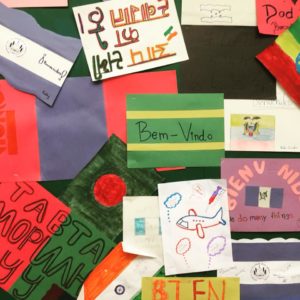 Anti-Bullying Video: Our Health as Right team at Yorktown High School, consisting of an ESOL English class, started filming today for their service project to create a video to raise awareness about the experience of immigrants and reduce prejudice and bullying, which will appear on the Yorktown website. Acting and directing were 100% student facilitated.
Anti-Bullying Video: Our Health as Right team at Yorktown High School, consisting of an ESOL English class, started filming today for their service project to create a video to raise awareness about the experience of immigrants and reduce prejudice and bullying, which will appear on the Yorktown website. Acting and directing were 100% student facilitated.
Thursday 11/30
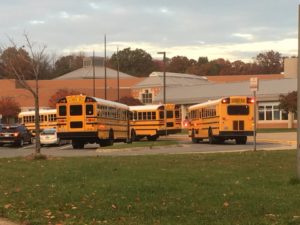 Letter to Cole’s Closet: Our Health as Right team at Liberty Middle School drafted and sent a letter to Cole’s Closet, an NGO which collects toys to donate to children in local hospitals, to inform them that they will be organizing a toy drive at their school as their first service project. In the process, the students learned about formal letter writing.
Letter to Cole’s Closet: Our Health as Right team at Liberty Middle School drafted and sent a letter to Cole’s Closet, an NGO which collects toys to donate to children in local hospitals, to inform them that they will be organizing a toy drive at their school as their first service project. In the process, the students learned about formal letter writing.
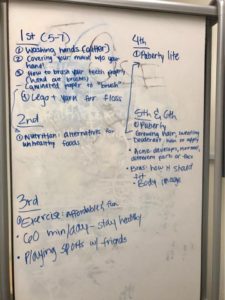 Public Health Presentations: In Richmond, student leaders of the VCU Health as Right team met late into the night in a library study room to organize their first service project; to facilitate interactive public health workshops for students in the “East End,” the side of Richmond which is the site of concentrated poverty.
Public Health Presentations: In Richmond, student leaders of the VCU Health as Right team met late into the night in a library study room to organize their first service project; to facilitate interactive public health workshops for students in the “East End,” the side of Richmond which is the site of concentrated poverty.
(Image: their planning board.)
Friday 12/1
 Club Phoenix: The after school group Club Phoenix, composed of middle and high schoolers from throughout Vienna and Fairfax, enthusiastically joined the Health as Right youth program and chose “recycling” as the topic of their first service project. (Image: their brainstorming sheet).
Club Phoenix: The after school group Club Phoenix, composed of middle and high schoolers from throughout Vienna and Fairfax, enthusiastically joined the Health as Right youth program and chose “recycling” as the topic of their first service project. (Image: their brainstorming sheet).
“Student Hunger”
-Ron Lapitan, Former Community Outreach Coordinator
Talk Center for Health and Human Rights gave this evening to the Student Health Advisory Committee, an group of individuals with a stake in the health of Fairfax public school students who use their influence to move policy:
Hunger amongst students seems to be on the minds of faculty at all the schools we work with. Specifically, we are worried that students who benefit from free lunch are still hungry throughout the day because it is not enough for them, and there is also a minority of students in need who do not sign up for free lunch. Teachers and faculty we have spoken to say they know of students who are still hungry throughout the day, and they often take personal measures to address this, such as buying a stock of snacks out of pocket to keep in their class to give to students whom they see are hungry. One teacher from Marshall High School told us:
“I know that several teachers keep food in their rooms out of pocket for kids who are hungry. I have two former students who have been coming to me for breakfast for the past several years. I just keep a box of granola bars in a drawer and they help themselves. I’ve also given money to students for lunch or the vending machines. If I receive special treats or pizza, I’ll put a little aside for some of my kids who are always hungry.”
We think this issue deserves more visibility and have two recommendations for how to improve the situation:
1. One recommendation is to raise awareness about the free lunch program and the problem of student hunger amongst students and faculty. For example, we have been told that new students might go without lunch for months simply because they are not aware there is a free lunch program. Other families never sign up because they misunderstand the nature of free lunch. A Marshall High School teacher said, “We have kids whose parents don’t want to apply for free or reduced lunch because of pride or immigration fears, so the kids don’t have food during the day.” These gaps could be easily addressed by measures such as putting posters in hallways to make the existence of free lunch common knowledge, and that information collected is only used by the school, and there is no need to fear it will be used by federal programs.
Students’ rights should also be made common knowledge. For example, I once observed a conversation between a front desk staff at Herndon Middle School and a student who was sent there by her teacher because she was hungry in class. The staff asked, “Why didn’t you pack a lunch from home?” The student answered, “There’s no food at home.” The staff asked, “Can’t you go to the cafeteria to get lunch?” The student answered, “I didn’t have money, so they told me I couldn’t get lunch.” In FCPS, it is illegal to turn away a student for lunch even if they don’t have money. They should be able to incur a balance on their account if necessary, and this is something both that student and the lunch staff should have known that.
2. The second recommendation is to learn what measures schools already have. For example, at Marshall High School, they keep a stock of snacks in the Student Services Office, and if a student ever comes to get snacks because they are hungry, a social worker and a counselor come together to create a long-term plan to help that student not feel hungry during the day. Herndon Middle School has something called the H3 Program where students get donated non-perishable foods on Fridays for the weekend. Annandale High School has a food pantry which is stocked by community donations, and they do occasional tours so that members of the school know that it is there.
After learning about the programs that already exist at the schools, measures should be taken to fill in their gaps, such as by simply making it common knowledge for students that these resources are available. For example, many schools have a food pantry that most students and even faculty are not even aware is there. These pantries could be revived by making it common knowledge to the school community that they exist, and then raising support from the community to stock them.
If needed, our organization would be happy to use our presence in the schools to work with them to implement these recommendations.
____________________________________
Results: The Committee is very interested in exploring ways to raise awareness about the issue of student hunger in the schools and in exploring creative ways to ensure that students don’t have to be hungry during the school day.
(Image: Dr. Milani, also a board member of SHAC, at the meeting.)
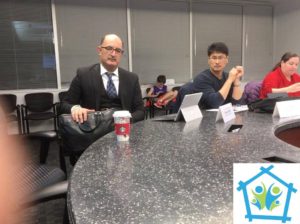
From “Versus” to “And”
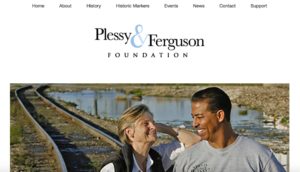 -Ron Lapitan, Former Community Outreach Coordinator
-Ron Lapitan, Former Community Outreach Coordinator
CHHR will participate in a Sep. 10 panel to comment on the events in Charlottesville. When participating in conversations about pressing issues, it is important not to be fixated on cursing the current reality, but rather to highlight glimpses of the culture we want to work towards. In my preparatory research, I found this story of Keith Plessy and Phoebe Ferguson, descendants of the sides in the Plessy v Ferguson case that upheld segregation.
Their first conversation in a New Orleans coffee shop called Cafe Reconciliation went like this:
Plessy, descendant of the carpetbagger of color who deliberately sat in a white train car to get arrested: “Hey, it’s not Plessy v Ferguson anymore. It’s Plessy and Ferguson.”
Ferguson, descendant of the lawyer who defended the “separate but equal” doctrine apologizes.
Plessy: “You weren’t alive during that time. Neither was I. We have to change that whole image.”
And so the Plessy & Ferguson Foundation, which educates communities about the importance of the case to today’s culture, was born.
“You never change things by fighting the existing reality. To change something, build a new model that makes the old model obsolete.”
-Buckminster Fuller
(Image: the two founders, the Foundation’s website.)
#CHHR #healthasright
Gender Equality Unit
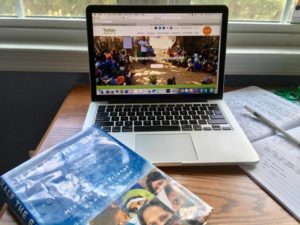 -Ron Lapitan, Former Community Outreach Coordinator
-Ron Lapitan, Former Community Outreach Coordinator
This week, we’re developing the Gender Equality unit of the curriculum for the high school students in our Health as Right after school program, which teaches them about developing communities towards a culture of health and human rights.
One social action principle they will learn about is that complete cultural change can only occur with a mutual transformation of both structures and values, and that development is incomplete if change only centers on one. For example, 28 African countries practice female genital mutilation (FGM), the painful circumcision of girls’ reproductive organs as a rite of passage into womanhood, leading to several health problems throughout life. Many of these countries have had laws banning this practice for decades, yet it continues for a majority of women because it is a deeply ingrained part of peoples’ family values and social norms.
Another social action principle students will learn about is consultation. When it comes to promoting often contentious ideals such as supporting girls to get their education, to choose when and who they marry, and abolishing practices such as FGM, consultation is a method of engaging universal participation of a community’s members to talk about its own reality, and to make educated decisions based on their desires for the well-being of the place where they live. Consultation creates the needed transformation at the level of values, and ensures that communities are united in implementing changes in culture.
To learn what these principles might look like in practice, the students will do a case study of Tostan, a West-African organization which addresses FGM by starting participatory conversations about FGM with the generality of a community’s members, educating them about its health impacts, engaging them to express their own experiences of gender inequality and learn from the experiences of others, and then trusting in their capacity to make positive decisions for their community once they are educated about the reality of gender issues.
As a result of their participatory models, Tostan boasts that:
- 3m+ communities have publicly declared an end to FGM
- 7500+ communities have publicly declared their daughters will not marry before they are 18
- 20k+ women have been selected for leadership roles in their communities
“Women aren’t the problem but the solution. The plight of girls is no more a tragedy than an opportunity.”
-Half the Sky, journalists Nicholas Kristof and Sheryl WuDunn
#healthasright #youthteams
Principles of Social Action
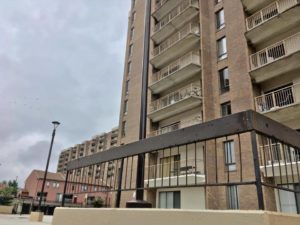 -Ron Lapitan, Former Community Outreach Coordinator
-Ron Lapitan, Former Community Outreach Coordinator
My energy at work has been devoted to developing the curriculum for our high school leaders lately. While our doctors see free patients in the bustling clinic, I sit in the backroom writing, typing, and scrapping. When I need ideas, I take a brainstorming walk in the apartments behind our clinic.
The curriculum outlines principles learned from participation in various community building programs and movements for effective social action that is organic, systematic, and non-adversarial, the kind we want our high school students to live to pursue. Their goal: to build a culture of health and human rights.
One principle is engaging universal participation. The field of development is replete with interventions which revolve around an external group entering a community to offer aid, which the community passively receives, and then leaving. Development of this kind suffers four inadequacies: 1. Solutions are often disconnected from the actual needs and reality of the community. 2. They don’t actually build the community’s capacity to address its own reality, thus solutions are only short-term because they rely on outside resources. 3. They don’t create change on the level of values because they don’t engage people to examine their own beliefs and ways of life. 4. They often have a narrow definition of development which divides communities into “developed” and “undeveloped,” largely based on material standards of progress. But when it comes to problems such as climate change, which is the subject of one of the curriculum’s modules, to which “developed” countries contribute the greatest to while “undeveloped” communities suffer most from the health and human rights impacts, which communities are in greater need of development and a reexamination of our patterns of life?
To lead a social movement based on universal participation, the second principle is a focus for building capacity in individuals. This involves reexamining one’s understanding of human nature, which impacts the methods one chooses to try to create change. For example, if one’s understanding is that humans are self-interested, finding our greatest motivation in self-maximization, are we not likely to choose solutions that revolve around superficial incentivization, such as encouraging a community to send its daughters to school by providing a financial reward? Imagine instead seeing individuals as mines filled with gems of inestimable value, having everything we need to create a different kind of world; such as talents and skills, a desire for change, and a sense of justice. Finding our greatest joy in being connected with others and to a higher purpose. Then solutions would attempt to tap into this inherent desire and potential, such as a group of neighbors creating spaces of conversation for community members to discuss their experience of gender norms, and the importance of sending local girls to school to the community’s progress.
To effectively build capacity, the third principle is seeing potential in others. This involves a commitment both to searching for the strengths in others and not being fixated on their faults. It understands that what we see in the world as imperfection, and even as corruption and evil, has no constructive substance of its own on which to build from. They are like darkness, which has no substance and is only what fills the space in the absence of light. In the same way, ignorance is only the absence of education, disunity the absence of unity, apathy the absence of inspiration, and hate the absence of love. If one wishes to rid the world of darkness and affect fundamental change, there is no foundation on which to do it simply by decrying and cursing the darkness. Darkness can only be dissipated by cultivating light.
I get excited, thinking about the next generation with a new imagination of change.
“Darkness cannot drive out darkness; only light can do that. Hate cannot drive out hate; only love can do that.”
-Martin Luther King Jr.
“The best way to predict the future is to create it.”
-Abraham Lincoln
#healthasright #youthteams
Beautiful Conversations
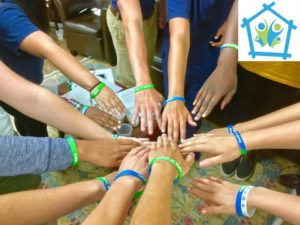 -Ron Lapitan, Former Community Outreach Coordinator
-Ron Lapitan, Former Community Outreach Coordinator
“Saving the world is a team sport,” said Kevin Krisko as we introduced ourselves. He is from Images for Good, a non-profit that uses photography to tell important stories, and one of our photographers for today. And the others who sat in the packed lobby of our clinic were the student leaders from the various Health as Right clubs we have started this year. Today was the pizza party to celebrate launching the Program in 9 schools.
The student leaders also came to pilot test the curriculum that accompanies the Health as Right Program. The curriculum has no teacher. It is a work book of discussion prompts and open-ended questions, designed to teach the students how to have conversations about health and human rights.
“What are human rights?” one of the students read the first question.
“I think that there are a lot of things that make people different, like religion, race, sex, or class,” said Tarlan from Marshall High School. “But underneath, we are all human and have the same needs. I think human rights are the things that everyone deserves, once you take away our differences,” she said.
In each section, the student leaders read Articles from the Universal Declaration of Human Rights, the first document that tried to codify these universal needs that everyone deserves.
“All human beings are born free and equal in dignity and rights. They are endowed with reason and conscience and should act towards one another in a spirit of brotherhood,” one of the students read Article 1 of the Declaration, which covers the subject of dignity.
“Describe a time when you saw people treat each other ‘in a spirit of brotherhood,'” they read the question that followed. There was a thoughtful pause in the room.
“I was in New York photographing two homeless people once,” started Tenzin, one of the student photographers from Images for Good. “One of them went to the other and gave her a few dollars to buy food, even though she had nothing herself,” he said.
“Did you all hear on the news about the Muslim girl beaten to death this past month?” asked Clark from Marshall High School. Nabra Hassanen, a 17 year old high schooler who was on her way to meet her friends for suhoor, the morning meal before the fast. “Her family made a GoFundMe to raise funds for her funeral. When I saw it, it had raised over $60,000 in just a few days. It wasn’t just from people in this community, but people from all over the country,” she described. Kevin pointed out that Hassanen was a student from South Lakes High School, where we recently started the newest of our Health as Right Clubs. Sitting next to me was Aravindan, representing that school.
“See the pain and hope together in one building. Which one will win? That is up to people like you,” said Kevin to the room of youth.
“I once met a homeless man selling roses, but he didn’t want to sell one to me. He just wanted to talk,” chimed in Aundia in her nurse scrubs, student at VCU and one of our clinical interns. “At the end, he told me that he had 420 pennies that he didn’t know what to do with, so he wanted to know if I wanted them. All I could do was cry because this man had nothing, and it was still so easy for him to offer something to me,” she said. It brought smiles to the room.
There was an electricity in the room, the kind when people have discovered their own power to put words to their deeper ideals. A beautiful conversation. “When you read the Universal Declaration of Human Rights, it describes a culture that doesn’t exist,” I said to the leaders. A culture that is just and fair, that gives expression to our highest ideals and aspirations as human beings. “Then it is your responsibility to create it. But what should something that no one has ever seen look like? Perhaps the first step of creating a new world is simply learning how to talk about the kind of world that we want to create,” I said to the smiles of the leaders. This is why the curriculum has no teacher. It designed not to give an answer, but to cultivate power of expression because it is each of us who will stand up to dream of such a world who are the answer.
The friends planned some activities to do together during the summer, including a hike/trash pick up of a nature trail and volunteering together at soup kitchens. In the Fall, the teams will return to their own school projects, ranging from empowering foster youth to finish high school, to creating more resources for homeless students, to making female hygiene protection more accessible to students who can’t afford it; but with a new identity as a network of friends working for change. Today, we create a culture of beautiful conversations. Tomorrow, we create a beautiful reality.
“As human beings, our greatness lies not so much in being able to remake the world… as in being able to remake ourselves.”
-Mahatma Ghandi
Be sure to check out and Like the Images for Good page: https://www.facebook.com/imagesforGood/
#healthasright #youthteams
On the Road
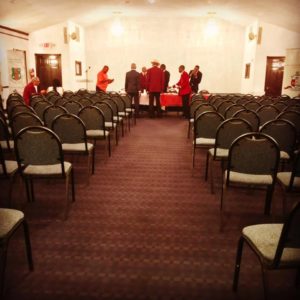 -Ron Lapitan, Former Community Outreach Coordinator
-Ron Lapitan, Former Community Outreach Coordinator
So much seems to happen these days that there doesn’t seem time to write it all down.
My workday started this afternoon in Culmore, a neighborhood which is a diverse culmination of immigrant communities, in the second floor of a church where a free clinic sets up on Tuesdays and Thursdays. The director gave my intern and I a tour, then we consulted about how their clinic and the Center for Health and Human Rights can serve the community together.
Right after, we drove to the home of Aravindan, a high school student in Herndon. He heard about our Health as Right School Program from a teacher, researched it on the Internet, and then called me to see how he could get involved. So today we showed up at his door, like Hogwarts inviting Harry Potter to join a world of people with powers like him to change the world.
“If you could change something about your community that would affect public health, what would you change?” I asked as we sat in his living room.
“I notice there are a lot of students at South Lakes High School who can’t afford medical supplies, like epipens. I’d like to help make them more affordable,” said Aravindan. “I’m president of the biology club, and we have been trying to get involved in something that would make an impact on the community. I think this program would help us.”
“I’m glad you’re a part of our team,” I said with a smile, then gave him one of our bracelets. And so the 8 clubs we have started so far became 9.
My intern and I went straight from Aravindan’s door to our car and drove for an hour to a Baptist church in Maryland for an evening panel discussion about how to prepare the community’s youth for interactions with the police. It was a church primarily full of African-Americans, and every parent there talked about the typical conversation they had with their children about what to do when you get pulled over. “Put your registration in the ceiling mirror, so you are reaching up not down. Turn down the music. Keep answers succinct and respectful. ‘Yes sir, no sir.” Everywhere you go, people have been hurt in some way for lack of human rights, I thought to myself.
A minister had us stand and link hands for a closing benediction for a just world. Then my intern and I weaved through the socializing crowd to shake as many hands as possible.
“Just give our church a call, and we’ll schedule a time to talk about how to serve the youth,” said the bishop generously.
“We are part of the school board too. We can get you to speak in front of the board, as well as connect you to students,” added Brother Kenar, another church member. Now the Health as Right Program has leads into the Maryland schools.
“We’ll be back,” I said with a smile as we shook their hands and parted.
My intern and I drove home in silence. Not the awkward kind but the satisfied kind, when you feel like you’ve accomplished something and silence is how you appreciate it. The windows of the buildings passing by glowed in the night.
“Get some sleep,” I said with a smile as I dropped him home at 11:00pm. We will wake up early tomorrow morning for an all day conference for organizations serving refugees that our Center helped organize. There is so much to do, I thought as I drove home by myself on the empty night road. All the new connections to follow up with, and conversations to schedule. But I am happy life can be this way. I want to be a part of this world.
“Far and away the best prize life has to offer is the chance to work hard at work worth doing.”
Theodore Roosevelt
(Image: leaving the panel discussion about youth and law enforcement)
Recent Posts
Archives
Categories
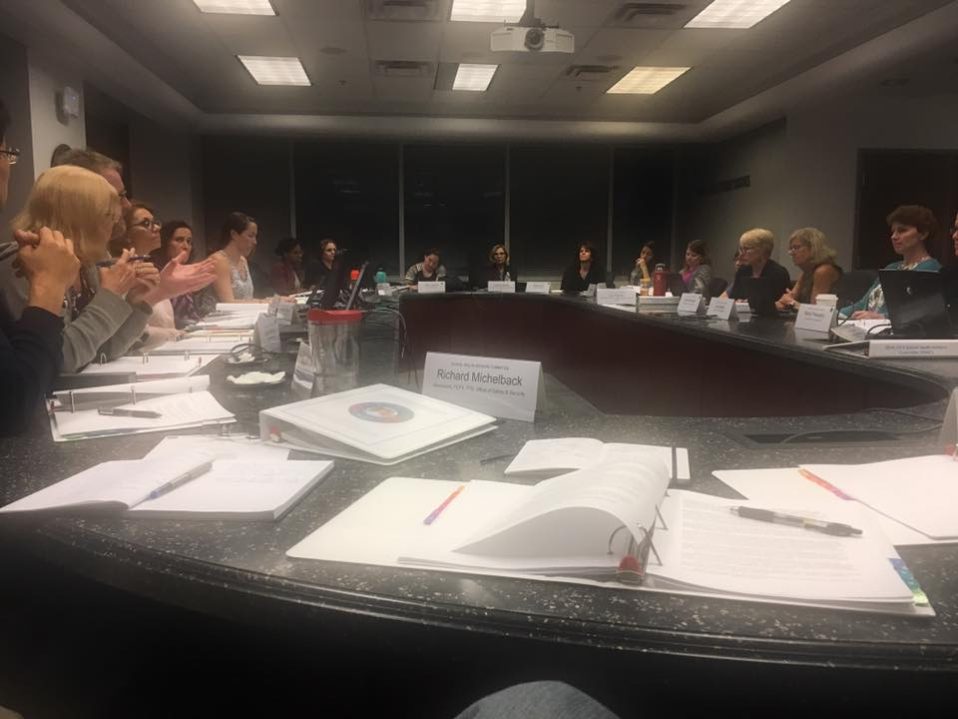
2019 Agenda
September 27, 2018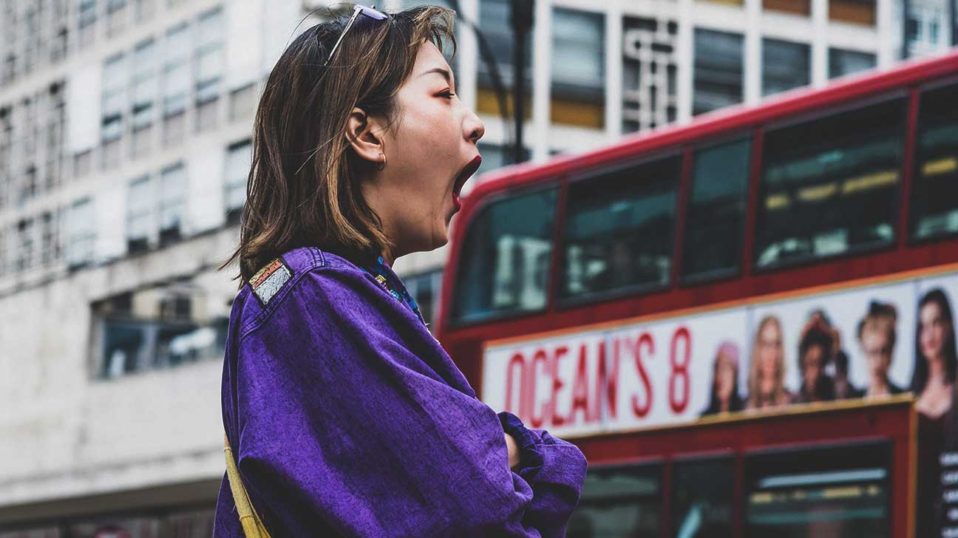
Sleeping is More Beneficial Than You Think
September 25, 2018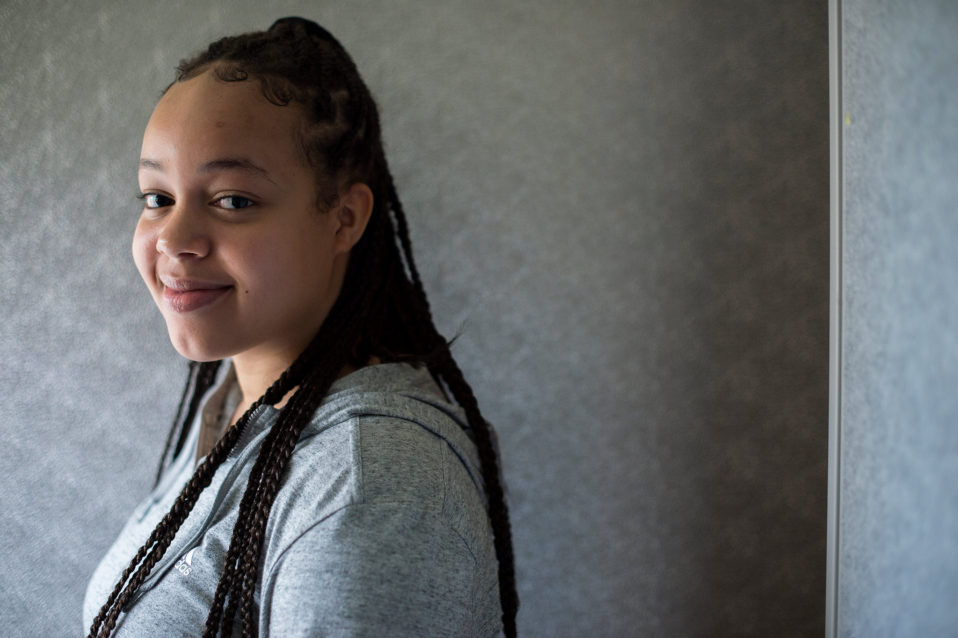
“Gender Roles”
September 18, 2018
Post Categories
- Accessible Healthcare (5)
- Change (4)
- Community Health Center (2)
- Fundraisers (2)
- Life (4)
- Patient Profile (3)
- Social Discourse (8)
- Uncategorized (13)
- Youth Teams (28)


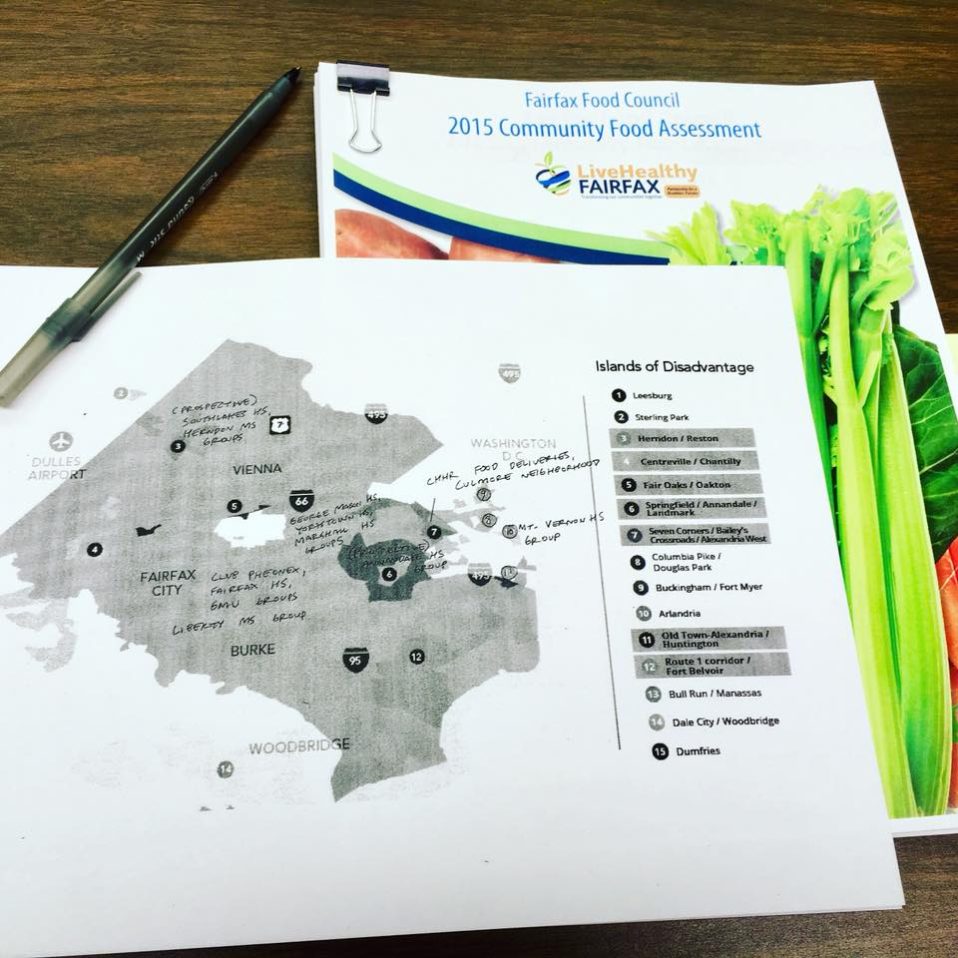
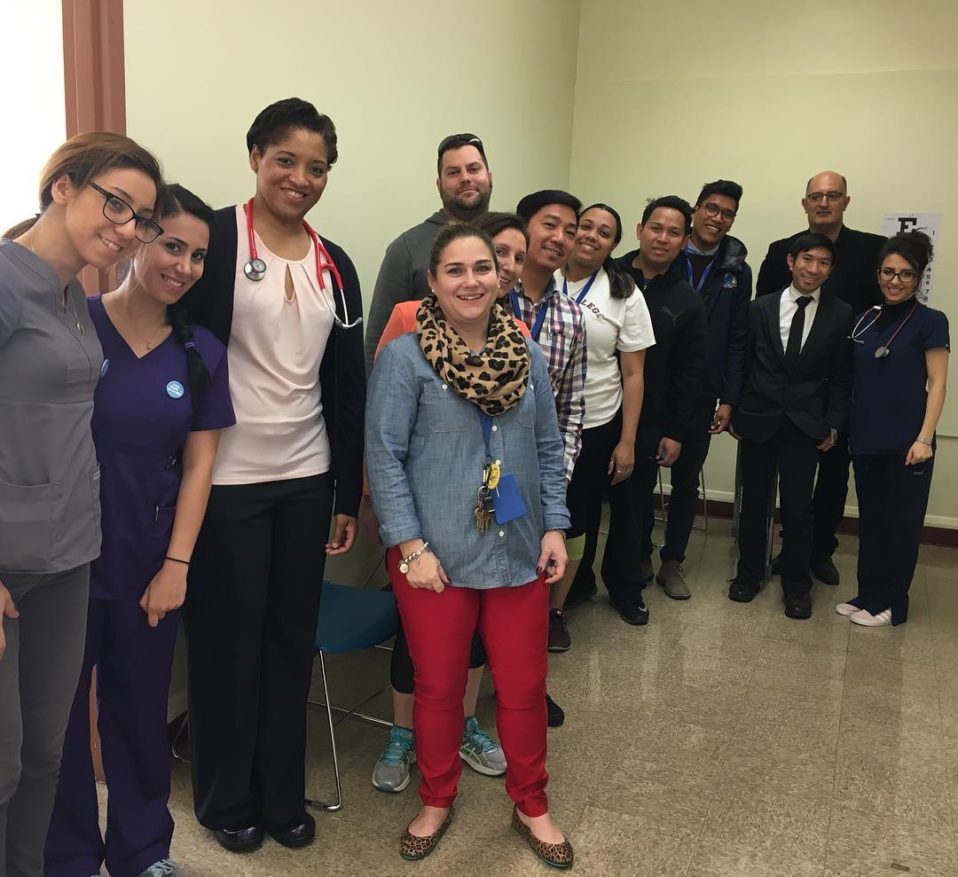
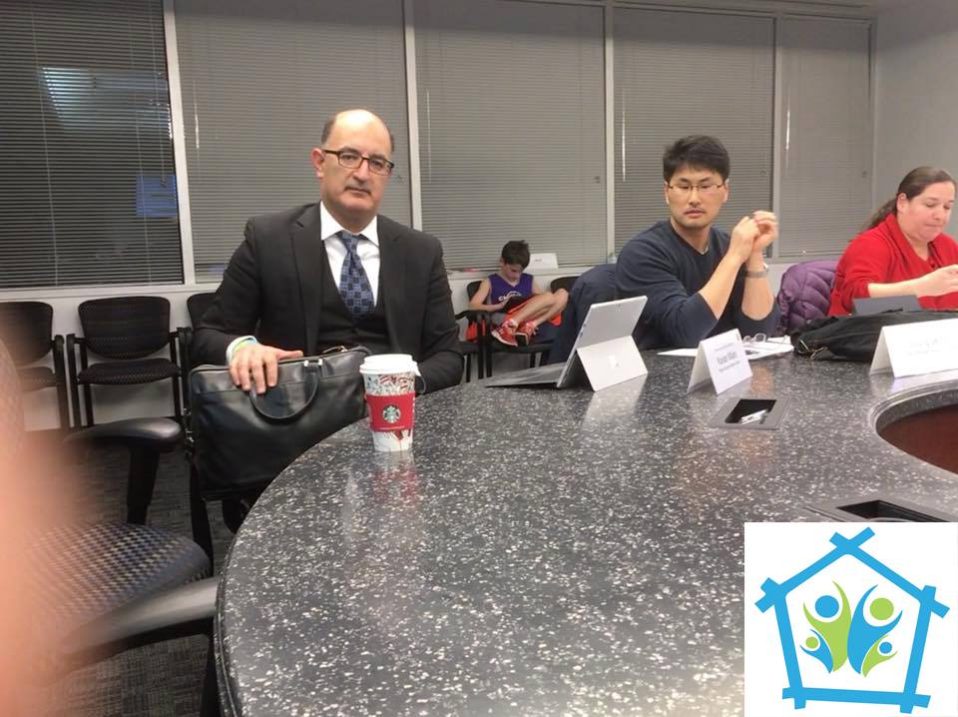
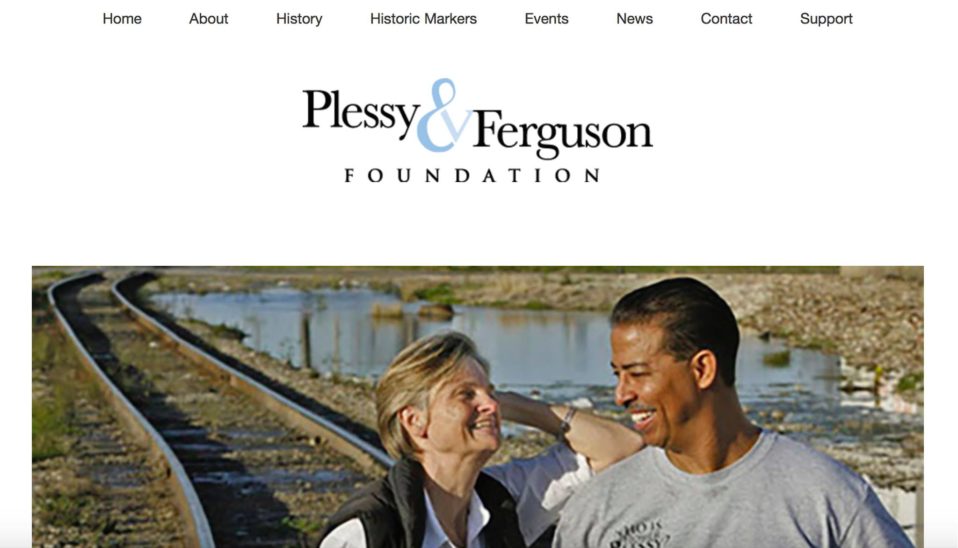
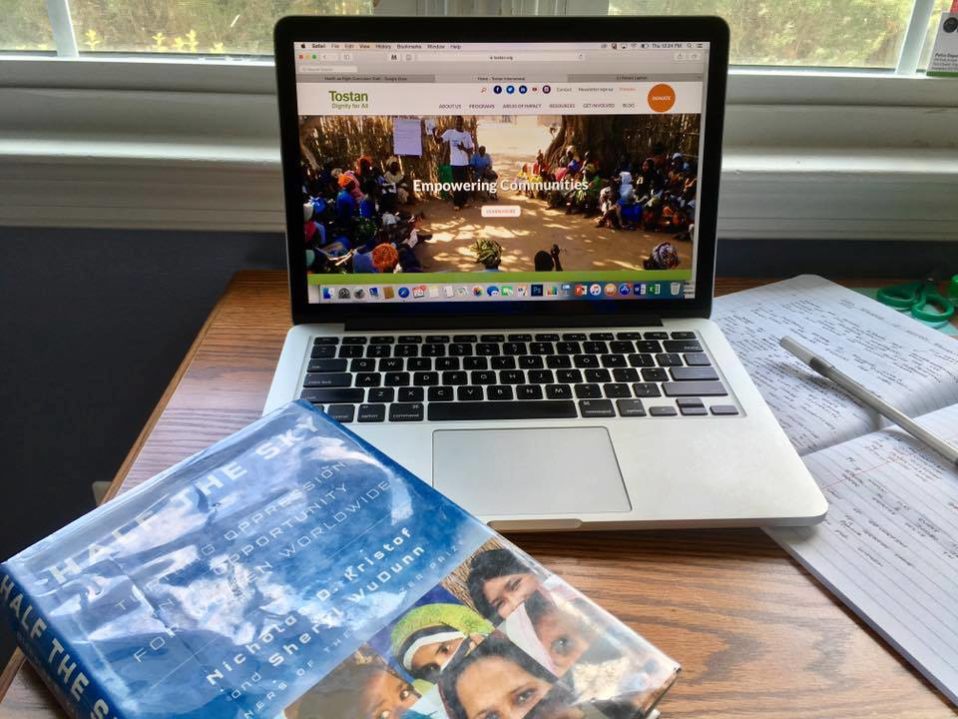
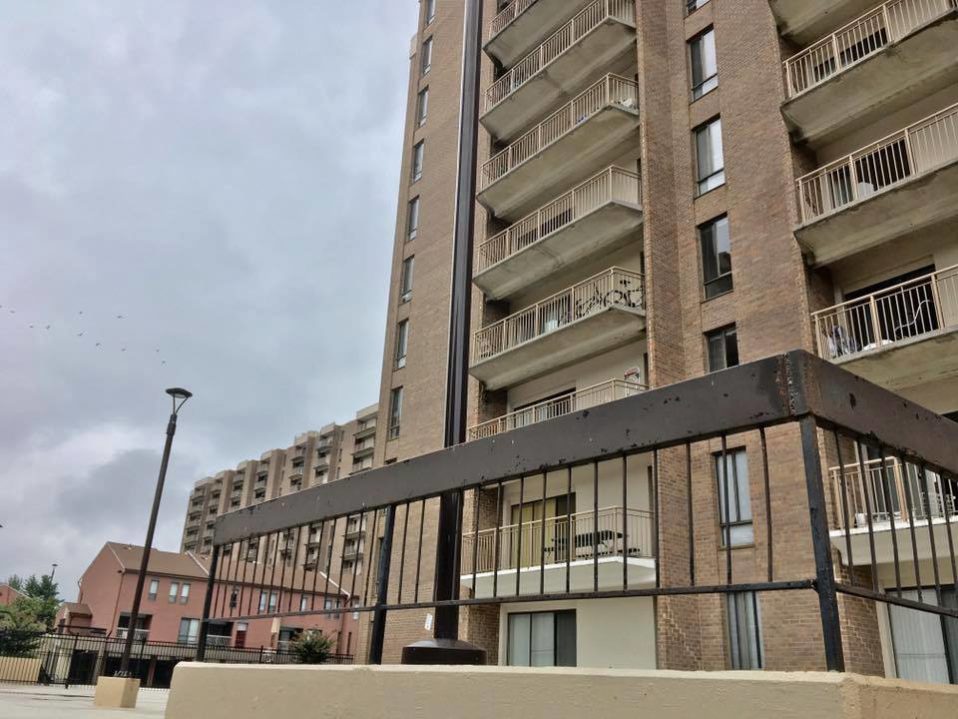
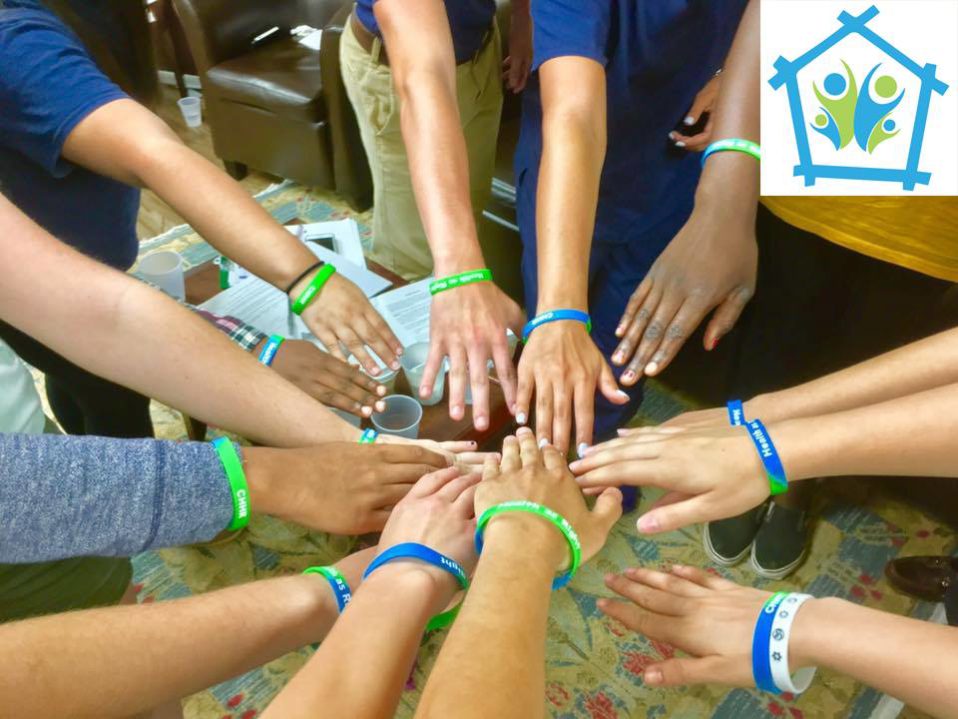
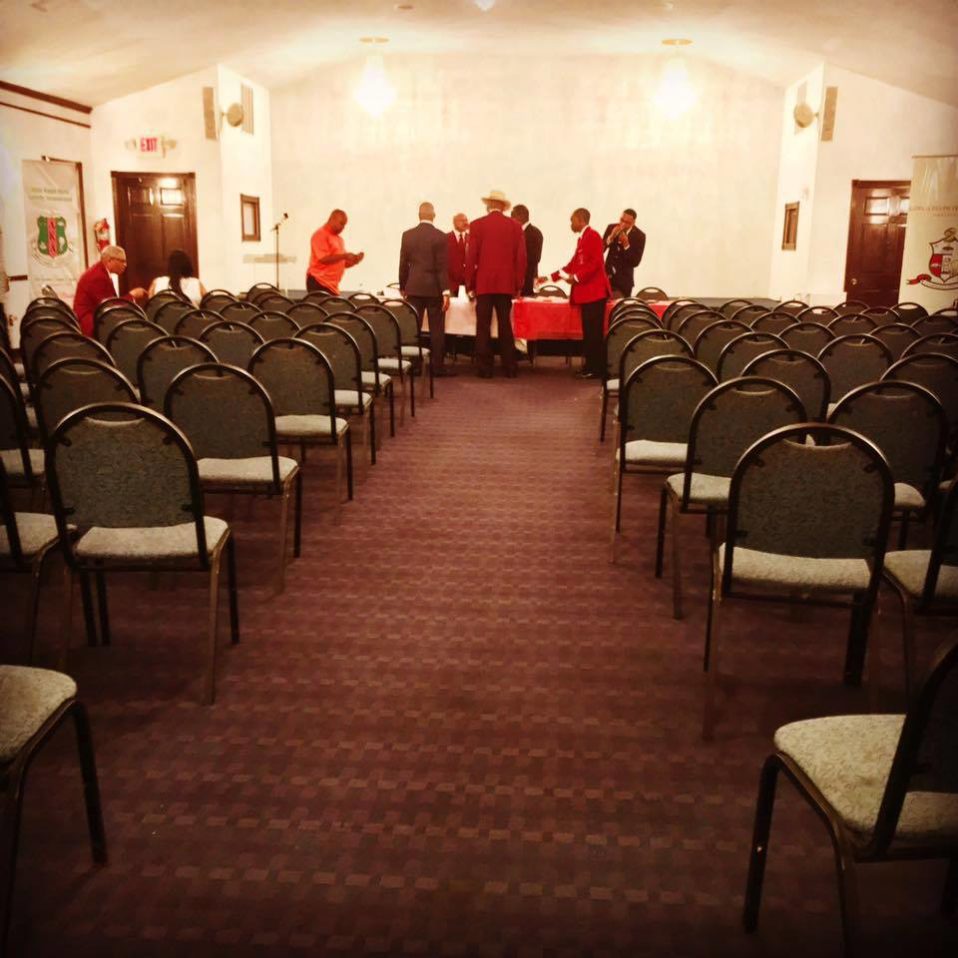
Recent Comments